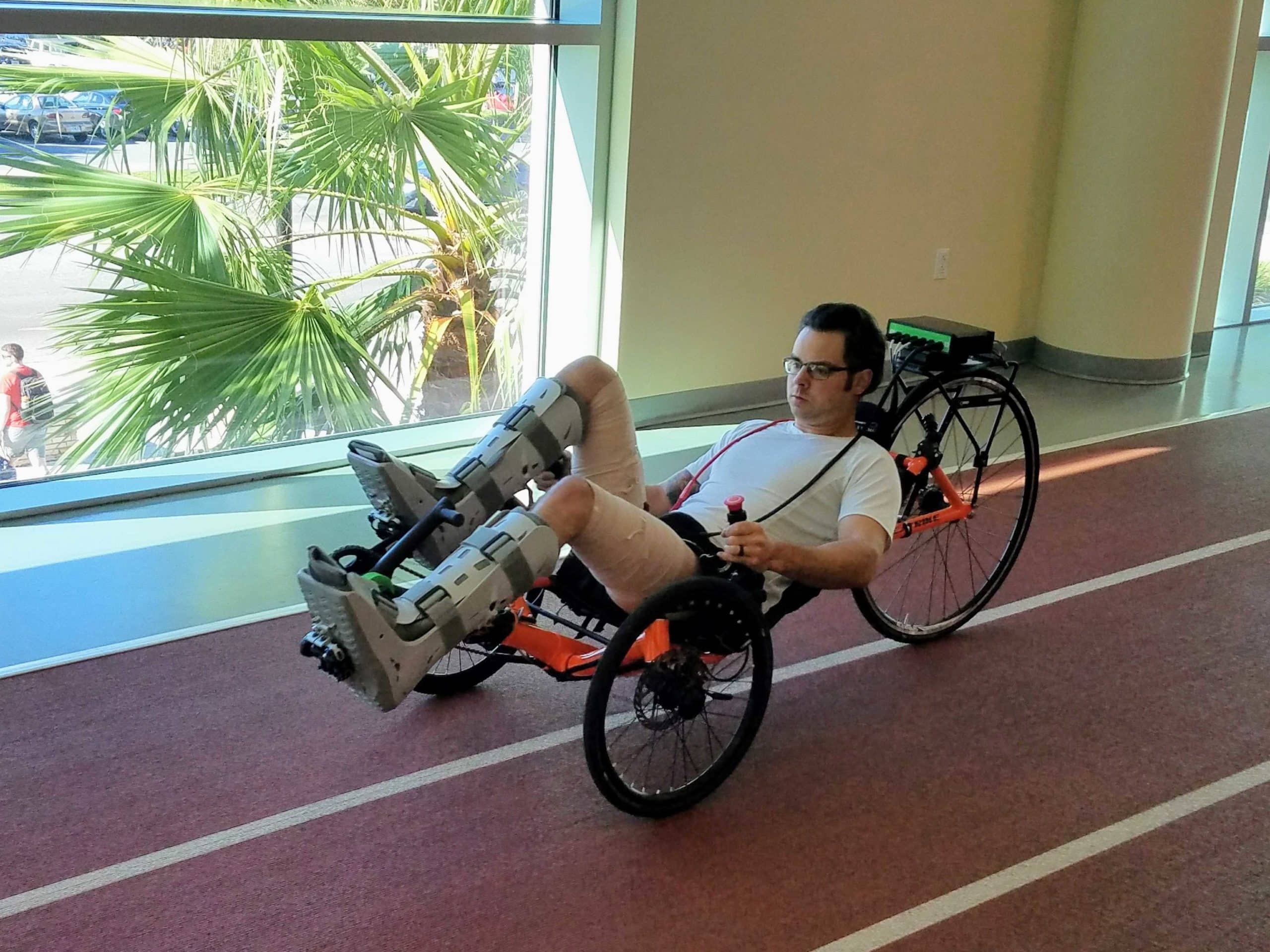5 Awesome Applications of Electrical Stimulation
July 12, 2024
The human body is an incredibly complicated machine, with all of its separate parts and pieces sending messages to each other through the electrical wires that are the nerves. Electrical stimulation can be used to tap into the network of messages traveling back and forth through the body, giving us the power to take control of our bodies in a way that seems like science fiction. Here are some of the awesome applications of electrical stimulation.
5. Pain Relief
When you’re in pain, your body is sending a message through your nerves to your brain. Electrical stimulation, when applied correctly, can effectively block the pain signal so that your brain never gets the message.

Imagine you pulled a muscle in your lower back. The pain receptors in your back say to your brain, “We’ve got a problem down here,” and you interpret that message as a dull ache. Applying electrical stimulation around the pain receptors essentially generates so much noise that your brain can’t hear what the pain receptors are saying. Since you don’t get the message, you don’t feel the pain.
It’s so effective, Icy Hot started adding electrical stimulation to their patches, and it looks like Shaq loves it. Icy Hot plus transcutaneous electrical stimulation (TENS) makes for some effective pain relief.
4. Sports Performance
Athletes have been using electrical muscle stimulation (EMS) to build muscle, increase strength, and speed recovery since the Russians started incorporating EMS into their training for the Olympics back in the 1950s. The application of electrical stimulation to the muscles can activate all of the fibers in a muscle group at the same time, resulting in significantly stronger contractions than can typically be achieved voluntarily.
More loading of the muscle means more adaptation, plus, you can essentially work the muscle out without thinking about it since the EMS activates the muscles for you. Compex markets a line of electrical stimulators for these purposes.

Electrical muscle stimulation (EMS) is used to activate the quadriceps during a squat. Photo courtesy of Gciriani (own work).
There is also the potential to use EMS to train someone in performing a particular movement. For example, if an athlete isn’t activating their quadriceps properly during a squat, EMS can be used to both aid in the activation and cue the athlete on proper activation.
3. Rehabilitation
The most common application of electrical stimulation is during physical therapy, especially after injury or surgery on a joint like the knee. Muscle atrophy and poor activation are big problems after knee surgery, so physical therapists will typically use an electrical stimulation unit to cause isometric contractions of the quadriceps in an effort to combat atrophy and assist with voluntary contractions. Electrical stimulation also improves blood flow, which speeds up the healing process.

In The Matrix, Neo received a combination of acupuncture and electrical stimulation to rebuild his muscles after his lifelong, machine-induced coma.
Functional electrical stimulation (FES) is also especially useful for aiding in recovery following a stroke, brain injury, or incomplete spinal cord injury, as it can help teach the nervous system how to reach, grasp, or even walk again.
2. Compensating for Paralysis
Beyond rehabilitation, FES can be used as a neuroprosthetic to compensate for paralysis. For example, if your brain and spinal cord can’t communicate with the muscles in your shin, you might experience foot drop when walking. The paralyzed shin muscles are unable to pick your foot up when you walk, so your toe drags on the ground, making walking difficult and unsafe. An FES unit attached to your shins, like the WalkAide or the Bioness L300, can stimulate the paralyzed shin muscles at the right time when you’re walking, causing the foot to lift and eliminating drop foot.
FES can even enable someone who’s completely paralyzed to pedal a bicycle by activating their leg muscles for them. Products like the ERGYS, the RT300, and the MyoCycle Home enable people to do stationary cycling for exercise, and products like the RehaBike, the BerkelBike, and the MyoCycle Mobile enable people to go outside and cycle on the road.

The MyoCycle Home enables people who are paralyzed to pedal a bicycle again.
Reach out to us if you’d like a new MyoCycle and get the latest and greatest FES bike ever made! Contact MYOLYN if you’re interested in competing in the world’s first major FES bike race at the Cybathlon!
1. Controlling the Brain
The most incredible application of electrical stimulation is controlling the brain. If the body is controlled by electrical signals, the brain is the control center, and electrical stimulation can be used to hack the brain.
Anything the brain controls can be manipulated with electrical stimulation. Namely, emotions, cognitive performance, and motor skills. Some companies even sell kits that allow you to stimulate across your forehead to enhance concentration, though they exist in a bit of a gray area with respect to the FDA, and it’s unclear whether they’re safe or not.
The video below is an incredible demonstration of the power of deep brain stimulation, especially in alleviating the symptoms of some terrible diseases like Parkinson’s.
Functional Electrical Stimulation and the MyoCycle
The MyoCycle Home and MyoCycle Pro enable people who are paralyzed to achieve therapeutic exercise and pedal a bicycle again.
Reach out to us if you’d like a new MyoCycle and to get the latest and greatest FES bike ever made! Also, contact MYOLYN if you’re interested in competing in the world’s first major FES bike race at the Cybathlon!
